“The approved roadmap for the development of Uzbekistan’s agricultural sector raises doubts about the government’s intentions to end forced labor in the cotton sector,” writes independent researcher Alisher Ilhamov in an article for CABAR.asia.
This is his conclusion after reading the Decree of the President of Uzbekistan “On Approval of the Strategy of Agricultural Development of the Republic of Uzbekistan for 2020 – 2030”, dated 23 October 2019.
Judging by the content of the document, an ultra-centralized system of management of this sector based on command and control methods, coercion of farmers to plant and grow cotton, as well as forced quotas on the delivery of raw cotton to the state will continue. The decree and its annexes – the Strategy for the Development of Agriculture and the Road Map for its implementation – do not demonstrate the government’s serious intention to sufficiently reform the industry.
Despite the repeated commitments of the country’s leadership to end the practice of forced labor in the cotton sector, it has not yet demonstrated any serious progress in reforming the cotton sector, without which it is impossible to eliminate the practice of forced labor.
The government’s “double game”
After years of denial by the Uzbek authorities, President Shavkat Mirziyoyev, speaking at the UN General Assembly in September 2017, finally acknowledged the existence of forced labor in the cotton sector, stating that the Uzbek government, in cooperation with the International Labour Organisation (ILO), was working to eradicate the practice. Indeed, over the past two years since his speech, the forced mobilization of students and public and private sector workers has been significantly reduced. The most recent achievement was reducing pressure on schools and hospitals to participate in the cotton harvest last year.
However, forced mobilization of the population for cotton harvesting remains a major issue and continued to be widespread during last year’s cotton harvest. The hope that the practice would finally be eradicated in 2019 seem to have been dashed. Many reports have already been published about the mobilization of public sector employees, bankers, police cadets, military personnel, prisoners, and the mass extortion of money from the population and employees of enterprises and institutions to hire replacement workers (mardikors).
What is the reason for the continued practice of forced labor? After all, the government has given assurances that it has imposed a ban on the forced mobilization of the population to pick cotton and is willing to punish those who do not comply with these instructions. To this end, 400 inspectors have allegedly been trained to monitor the implementation of this ban.
However, it seems that the government is playing a double game in this matter.
On the one hand, part of the government seems to have the power to combat forced labor in the cotton fields and to cooperate closely with the ILO. These powers are particularly vested in the Ministry of Employment and Labor Relations. Its representatives sporadically threaten to sanction the “violators” of the ban on forced labor and claim to apply the appropriate sanctions. However, the Ministry has never bothered to make public the lists of officials subject to these sanctions or indicating which sanctions have been applied. In order to strengthen this mission, the Ministry of Labor has appointed the President of the Senate (Oliy Majlis), Tanzila Narbaeva, as a special rapporteur for the issue.
On the other hand, the centralized and mandatory quotas for cotton delivery have yet to be abolished. Agencies such as the Ministry of Finance, the Ministry of Agriculture, as well as local hokims (public officials) are still responsible for the implementation of these quotas. The most visible public figures who give instructions for mobilizing the population for cotton harvesting are the hokims. They essentially have no other option but to resort to the old practice of forced mobilization and all sorts of tricks to conceal coercion. For example, pickers are often forced to sign statements that they are picking cotton voluntarily. After all, imposed by the state low prices for cotton, which do not cover the cost of production, means that it is not possible to attract labor to the harvest by economic incentives alone.
Hokims therefore simply accept a rational choice in their dilemma with regard to which instructions they prioritize: meet the cotton quota by all means or adhere to “prohibitions” on forced labor. They are well aware that failure to comply with the state-set quota for the delivery of cotton will result in real punishment, up to and including the loss of office, while violations of the “prohibition” on the use of forced labor will result in lesser penalties.
At the same time, the government has set itself the ambitious goal of ending the export of raw cotton as early as 2020 by processing it all locally in order to export value-added products such as yarns, fabrics and clothing. This plan is hampered by, among other things, the boycott of Uzbek cotton by more than 300 companies around the world which also extends to cotton textiles. In order to remove this barrier, the government must convince these companies that it is undertaking reforms to eliminate the root causes of forced labor. But is it?
A vague roadmap
On October 23, the Decree “On Approval of the Strategy of Agricultural Development of the Republic of Uzbekistan for 2020 – 2030” was signed. This decree is accompanied by the strategy itself and the Roadmap for its implementation, with specific measures and deadlines for its implementation.
In section III of the strategy, entitled “Reducing the role of the state in the management of the sector and increasing the investment attractiveness”, vague reference is made to the “reduction of the role of the state in the management of the sphere” (agricultural production). The goal is to completely abandon public procurement, “except for the amount necessary for the implementation of grain crop interventions aimed at ensuring price stability in the domestic market”. That sounds good, but it is not clear under what circumstances this exception would apply.
Logically, the Roadmap should have provided an explanation of specific measures and timeframes. We look at the relevant section of this document, “Reducing the role of the state in governance …”, and we find the following measures:
- Development of investment programs to ensure the targeted attraction of credit lines of international financial institutions on the basis of the results of assessment of the needs of the agricultural sector in private investment and concessional loans.
- Development of additional measures aimed at developing public-private partnership mechanisms in the agricultural sector.
- Strengthening competition in the market of material and technical resources by means of privatization of non-strategic state enterprises in the sphere of supply of material and technical resources and provision of services to farms and enterprises for the processing of agricultural products. Provision should be made for this:
- Refrain from the practice of supplying materials and technical resources and rendering services at the expense of state credit funds;
- Introduction of standardized advance contracts as an experiment to promote the development of stable trade relations between the subjects of the agro-industrial complex;
- Transition to the system of subsidies by the Fund for State Support of Agriculture under the Ministry of Finance exclusively for interest rates on commercial bank loans;
- Ensuring a full transition to the agricultural support system that stimulates the intensification of agricultural production;
- Refrain from the practice of placement of agricultural crops by the state.
And that’s it. There are no other measures and nothing else is said about the abolition of mandatory quotas for the delivery of cotton to the state. Only one measure is indicated to refrain from the “practice of placement of crops by the state”, i.e. from forcing farmers to allocate so many hectares of their farms for cotton or grain. But the implementation of this measure is planned only for the first quarter of 2023. That is, farmers will be in servitude for at least three more years.
Thus, the strategic priority of abolishing the forced surrender of cotton to the state is not supported by an appropriate mechanism for its implementation. It means that this priority turns out to be nothing but an empty, non-binding declaration.
Interestingly, the draft decree, including the strategy and the Roadmap, was published in September this year for public discussion. As regards institutional drivers of forced labor practices, the draft decree was much more progressive than the decree which was finally adopted. In the relevant section of the draft Roadmap, the following measures were put forward:
- “Complete cessation of public procurement of raw cotton and wheat, except for procurement to support the intervention fund (scheduled for implementation by 1 January 2021).
- “Limitation of the practice of placement of agricultural crops by the state, applying it only to cotton and grains” (1 January 2020).
- “Increasing competition in the market of material and technical resources through the privatization of non-strategic state enterprises in the field of supply of materials and technical resources and services for farmers and processing of agricultural products” (September 1, 2020).
All these proposals disappeared in the final document. Most likely, supporters of the old model of centralized sector management were able to achieve the removal of these proposals resulting in the erosion of the program of measures to reform the cotton sector. This may have been down to lobbyists convincing decision makers to maintain full government control over raw cotton exports. It is the desire to maintain this control that is the main obstacle to reform of the cotton sector, which the author has previously written about.
What should the recommendations be?
- The Government of Uzbekistan should review the Cotton Sector Development Strategy and Roadmap to ensure and guarantee economic freedom to farms, especially in terms of how farmers manage their land, what crops they grow, to whom they sell their products and at what prices, and from whom and at what prices they buy seeds, fuel, agrochemicals, services, etc.
- Companies still questioning whether to buy Uzbek cotton and textiles are encouraged to wait for more convincing guarantees from the government that the institutional drivers of forced labor will be removed. Other potential investors in cotton textiles and international financial institutions should also pay attention to the consistency with which the Uzbek authorities are implementing reforms in the cotton sector and apply the principles of corporate social responsibility for their decisions and actions.
- The Secretariat of the ILO should finally stop allowing themselves to be misled about the real progress in addressing institutional causes of forced labor in Uzbekistan. This organization should pay attention to the root-causes that create demand for forced labor in this country, and not only to the consequences of these causes.
The EU and the U.S. government, to whose opinions Uzbekistan tends to listen, should encourage the government of Uzbekistan to implement real reforms in the cotton sector as a decisive factor in eliminating forced labor.





